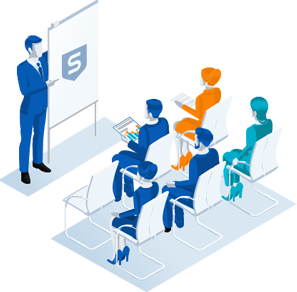Why HR Software Is Ready to Take Off
It’s estimated that 90 percent of Fortune 1000 companies plan to replace their human resources management software in the next four years. Many are replacing these legacy on-premises systems–some of which date back to the 1960s–with cloud-based HR systems. On top of hardware savings, enterprises using SaaS HR say they spend less on support.
Recently, BPR-Rico Manufacturing decided it was time for a change in its human resource systems.
The Medina, Ohio-based engineering outfit, which builds lift trucks and other material-handling equipment, had been using Sage North America’s Abra HR solution. The on-premises deployment was more than a decade old and had acquired some eccentricities. The system would randomly change employee dental insurance deductions to the two-year prior rate. An employee who generally worked a 32-hour week would occasionally flex to 40 hours, but the system would still pay for only 32 hours.
As it happened, Rico Manufacturing already was replacing its paper-based time card system with cloud-based time and attendance software from Kronos. The company decided to tap Kronos to replace its human resources and payroll system as well—and move it to the cloud.
The company went live on Kronos’ Software-as-a-Service (SaaS) human resources platform last July. The time and attendance system kicked in two months later. Kent Stelmasczuk, CFO at Rico Manufacturing, says the Kronos SaaS approach is cost-neutral with respect to the on-premises system, just considering the software licensing fees and not taking the cost of hardware into account.
“Anything we save on hardware is all upside,” Stelmasczuk says, noting that the company had been preparing for a server upgrade prior to the cloud shift.
The fundamentals of SaaS human resources are lining up for other organizations as well. The Department of Veterans Affairs is working toward a pilot launch of a SaaS HR system under a 10-year, $123 million contract with IBM. That deployment will replace a legacy human resources application that dates from the early 1960s.
Indeed, the sheer age of many human resources systems encourages migration to a new platform and that often means SaaS. Jason Averbook, chief business innovation officer at cloud services provider Appirio, says the HR application sector is in the midst of a replacement cycle. Averbrook was previously CEO at Knowledge Infusion, a human capital management consultancy Appirio acquired last year.
Up to 90 percent of the Fortune 1000 will replace or re-implement its core HR system in the next four years,” he says. “Most of the software that’s out there was written before the Internet was born. It doesn’t meet the needs and expectations of employees and managers. That’s why you see so much activity around the cloud.”
Cloud Offers Benefits for Firms Replacing Legacy HR Software
CIOs opting for human resources in the cloud have a number of choices from companies that grew up in the cloud or have moved to SaaS delivery following a history on on-premises products. Vendors offering human resources management applications in SaaS form include ADP, Ceridian, Kronos, Oracle, SAP and Workday.
Averbook says a pending on-premises upgrade of a legacy human resources system can trigger a move to SaaS. Many aging in-house systems have been customized beyond recognition and require a ton of internal support to keep them running, he points out. “CIOs want to get out of the business of maintaining back office systems. When the time to upgrade comes, it’s natural to look elsewhere.”
Rico Manufacturing avoided a legacy system and infrastructure upgrade and also offloaded the ongoing chore of updating an in-house application. The company used to receive quarterly state and federal tax updates from its previous HR vendor. But the updating task was susceptible to human error. The in-house software, for example, let customers select which portions of the update they wanted to install. (In one case, prior to Stelmasczuk’s arrival, the state tax updates were applied, but not the federal.)
In addition, the updating process involved downloading the update file, applying the update to the software and then going into the application and launching the updates, Stelmasczuk explained: “It was a multi-step process.”
Now, Kronos handles the job of keeping the software current.
“We don’t have to do the application of the updates and patches,” Stelmasczuk says. “It is all happening behind the scenes.”
“For [the] VA, a vendor-hosted HR solution just makes sense,” adds Paula Molloy, associate deputy assistant secretary, Human Resources Management, Policy & Planning, at the VA. “It allows us to deliver functionality without a major infrastructural investment, and frees-up our IT resources to focus on those applications that truly need to be ‘in-house.'”
The VA, meanwhile, also benefits from the hosted system’s shared-services pricing model, according to Adam Jelic, partner at IBM Global Business Services. He said IBM is providing the VA’s human resources application through an HR Line of Business Shared Services Center. The hosted system’s advantages, he says, include sharing cost across multiple clients, keeping software up to date and speed of deployment.




